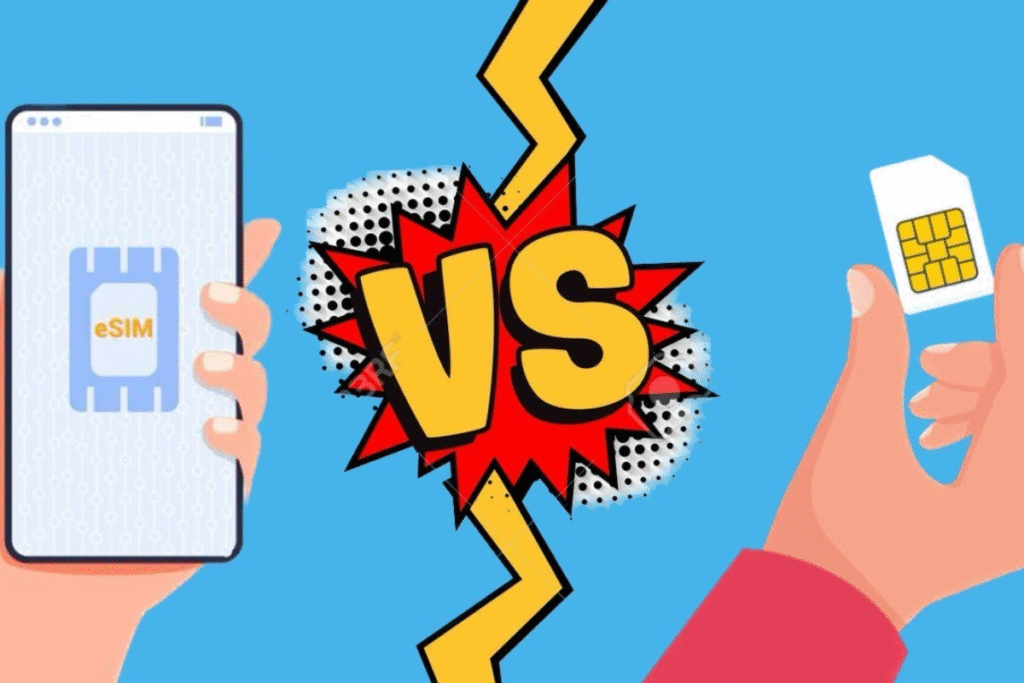Still wondering which SIM is your first take in 2025? You are not alone! Think of discussing this one over a coffee chat with your coolest friend. At FeedFashion, we’re here to spill the tea on the key differences between eSIM vs physical SIM cards, sharing real-time insights to help you make a confident choice. Ready to find the SIM that keeps you connected and ahead of the curve? Let’s begin.
What is a Physical SIM?
A physical SIM is a well-known small removable chip which easily adds your mobile number, network details, and security data. It allows your phone to access calls, texts, and internet services.
What does eSIM Mean?
An eSIM (embedded Subscriber Identity Module) is a built-in digital SIM inside your phone. It works just like a physical SIM, but without the tiny card. Your carrier activates it digitally. This means you can switch plans or numbers without physically swapping chips.
How is eSIM Different from a Physical SIM?
An eSIM is usually built into your device and activated digitally, on the other hand an physical SIM is a direct removable card you insert to connect to a mobile network.
Let’s take a complete look at the eSIM vs Physical SIM pros and cons table overview:
| Features | Physical SIM | eSIM |
| Form | Removable plastic chip | Built into the device |
| Activation | Requires inserting into the SIM slot | Activated digitally via QR code or app |
| Switching Plans | Needs a new SIM card from carrier | Change instantly without a new card |
| Durability | Can get lost or damaged | Cannot be removed or damaged physically |
| Convenience | Requires store visit for changes | Can activate anywhere with internet access |
| Device Compatibility | Works in almost all mobile devices | Only in eSIM-enabled devices |
Which Has Better Signal Strength – eSIM vs Physical SIM?
esim vs physical sim signal strength is identical for both of them connected to the same towers. Your carrier’s coverage and device determine performance, not the SIM type.
What actually affects your signal is:
Network Coverage: Your carrier’s tower availability in your area.
Device Hardware: The quality of your phone’s antennas and modem.
Location & Environment: Urban buildings, rural distances, or obstacles like walls can impact reception.
So, finally switching from a physical SIM to an eSIM won’t suddenly provide you more bars. If your signal is weak, the best fix is choosing a carrier with better coverage in your area or instead using a phone with stronger reception.
Pro Tip: Always remember to review your sim carrier’s coverage map as your mobile signal strength relies on network reach, not for using an eSIM or physical SIM.
What are the Benefits of eSIM over a Physical SIM card?
An eSIM is a built-in SIM inside your phone that you activate digitally. It makes switching plans, traveling abroad, and keeping multiple numbers much easier as no more tiny cards or visits to the store.
Here are the must know benefits for eSIM vs Physical SIM:
1. Switch Plans Instantly
Change your carrier or plan anytime through settings perfect for grabbing better deals without waiting or swapping tiny SIM cards.
2. Store Multiple Plans
Keep several plans on one device which is ideal for mixing work and personal numbers, or saving local plans for frequent travel spots.
3. Travel Without Hassle
Buy an international data plan online before your trip, avoiding expensive roaming charges and airport SIM counter lines.
4. Less Risk of Loss or Damage
Because an eSIM is built in, you can’t lose it or damage it like a small plastic SIM card.
5. More Space for Phone Features
As per the final observation, no SIM tray even frees up internal storage allowing manufacturers to add bigger batteries or to improve water resistance features in all new mobile phones.
Will eSIM Replace Physical SIMs in the Future?
eSIM technology is growing rapidly, prominent smartphone brands and carriers are promoting it for its flexibility and immediate activation services. However, physical sim in some areas with limited digital infrastructure is more important. Over the next few years, both eSIM vs. Physical SIM will usually come into co-existence until the global network coverage and device compatibility will fully support the eSIM in future.
Closing Thoughts
Choosing between an eSIM vs physical SIM card comparison in 2025 comes down to your lifestyle update, travel habits, and carrier support favourable choices. Both have their own strengths, but the perfect pick is the one that keeps you effortlessly connected. Stay informed, make the smart choice, and enjoy a stress-free mobile experience around the globe .
Stay ahead in the digital world. Follow FeedFashion to get more technology-smart tips, real-world insights, and the current mobile trends.
FAQs
1. Is it better to get an eSIM or local SIM?
An eSIM gives instant activation without going to a physical store, while a local SIM can be better in some areas with limited eSIM coverage or support.
2. Is eSIM sharp compared to a physical sim?
Absolutely! The eSIM is digitally activated into your mobile phones within a few minutes of scanning from the QR code or mobile app, while physical sim often require delivery or a store visit.
3. Which is the best eSIM vs physical SIM?
This depends entirely on your basic requirements because eSIMs are consistently great for passengers and multitaskers, while physical sim is always reliable for universal compatibility.

